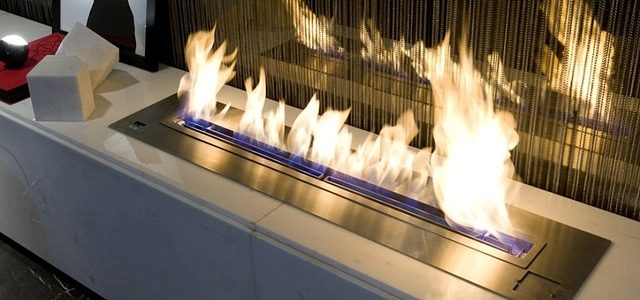
Bioethanol flame-effect fires have become a popular feature in the home, offering the visual attraction of the flames of a ‘real’ fire but not requiring the installation of a flue or chimney.
There are two types, those fuelled by bioethanol gel, and those that take liquid bioethanol fuel. Both put out a moderate amount of heat, but are usually purchased for the visual effect of a ‘real’ flame fire.
In gel fires, a pre-packed metal can of fuel is inserted into the fire grate and, when lit, the can itself is the burner. The flames cannot be regulated and, depending on the specific design of the fire, the gel fuel is sometimes not readily extinguished once lit.
When using bioethanol liquid, the flame effect is often better than that of a gel fire and a mechanism for regulating the size of the flame and extinguishing it is sometimes incorporated.
Whether liquid or gel, the bioethanol fuel is highly flammable and there have been incidents across the UK when people have been burned as a result of accidents when using these appliances. Most often it has been when re-fuelling.
Top tips:
- Beware of cheap sub-standard products.
- Follow manufacturer’s safety advice.
- Remember that bioethanol fuel is highly flammable.
- Flame can be almost invisible, especially when the fuel level becomes low.
- Refuel only when the fire has been extinguished and is cold.
- Use approved small containers to refuel.
- Wipe up any spillages before igniting the bioethanol. Keep fuel away from clothes. Don’t refuel when under the influence of alcohol – spillages of fuel could more easily happen and go unnoticed.
- Light with a manual or electric taper. Don’t use a lighter, match or lit rolled-up paper.
- Keep children and pets away from the fire.
- Don’t move the appliance with the fuel lit.
- Store bioethanol in appropriate containers away from any naked flame and carefully consider where to keep fuel safely.
- Do not use fires in a room with poor ventilation.
- Installing a CO detector in room is recommended.
- Make sure the fire is out before leaving the room or going to sleep.

